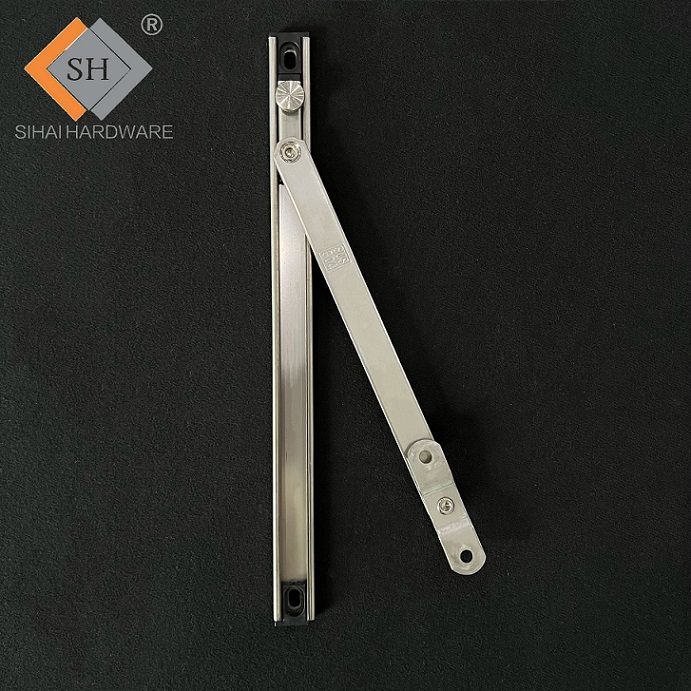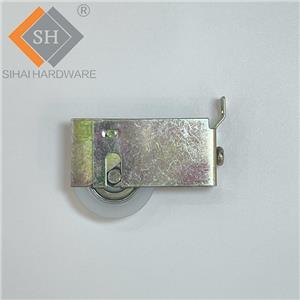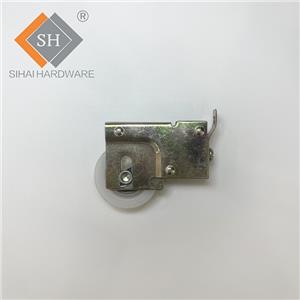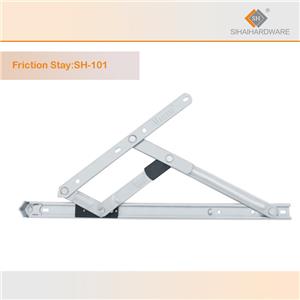ARTICLE NO.75|Evaluating the Pros and Cons of Casement Window Hinges on Sliding Windows
ARTICLE NO.75|Evaluating the Pros and Cons of Casement Window Hinges on Sliding Windows
The choice of window hardware, including hinges, is a critical factor in determining the overall performance, functionality, and aesthetic appeal of a window system. While casement window hinges are commonly associated with side-hinged casement windows, their potential application on sliding windows has sparked interest among homeowners and window professionals alike. In this article, we will explore the advantages and disadvantages of using casement window hinges, including window friction stay hinges and aluminum window hinges, on three common types of sliding windows: single-hung, double-hung, and sliding windows.
Advantages of Using Casement Window Hinges on Sliding Windows:
1. Improved Ventilation:
Casement window hingesallow sliding windows to open outward, providing a wider opening and enhanced airflow, which can be particularly beneficial in improving natural ventilation and indoor air quality.
2. Enhanced Security:
Casement window hinges generally offer a more secure locking mechanism compared to traditional sliding window tracks, potentially deterring unwanted entry and improving overall home security.
3. Aesthetic Versatility:
The use of casement window hinges, including aluminum window hinges, can introduce a unique and visually appealing design element to sliding windows, expanding the range of architectural styles and aesthetic options available to homeowners.

Disadvantages of Using Casement Window Hinges on Sliding Windows:
1. Operational Challenges:
Sliding windows are typically designed to operate on a horizontal track, and the integration of casement window hinges, including window friction stay hinges, may introduce additional complexities and potential for operational issues, such as binding or misalignment.
2. Maintenance Considerations:
Casement window hinges may require more frequent maintenance, such as lubrication and adjustments, compared to the simpler track-based mechanisms of traditional sliding windows, which could increase the ongoing maintenance burden for homeowners.
3. Compatibility Concerns:
Existing sliding window frames and hardware may not be designed to accommodate the specific installation requirements of casement window hinges, necessitating more extensive modifications or potentially limiting the feasibility of this approach.
4. Cost Implications:
The retrofit or replacement of sliding windows with casement window hinges, including aluminum window hinges, may involve higher upfront costs compared to maintaining the original sliding window configuration.
Practical Considerations:
In practice, the decision to use casement window hinges on sliding windows should be based on a thorough evaluation of the specific window system, the homeowner's needs and preferences, and the expertise of experienced window professionals. In some cases, the advantages of improved ventilation and enhanced security may outweigh the potential challenges, while in other scenarios, the operational and compatibility concerns may make the traditional sliding window design a more suitable choice.
Conclusion:
The use of casement window hinges, including window friction stay hinges and aluminum window hinges, on sliding windows presents both advantages and disadvantages that must be carefully considered. Homeowners and window professionals should weigh the potential benefits against the practical limitations to determine the most appropriate solution for their specific needs and window configurations. Ultimately, the decision should be based on a comprehensive assessment of the window system, the desired performance requirements, and the available resources for implementation and ongoing maintenance.




